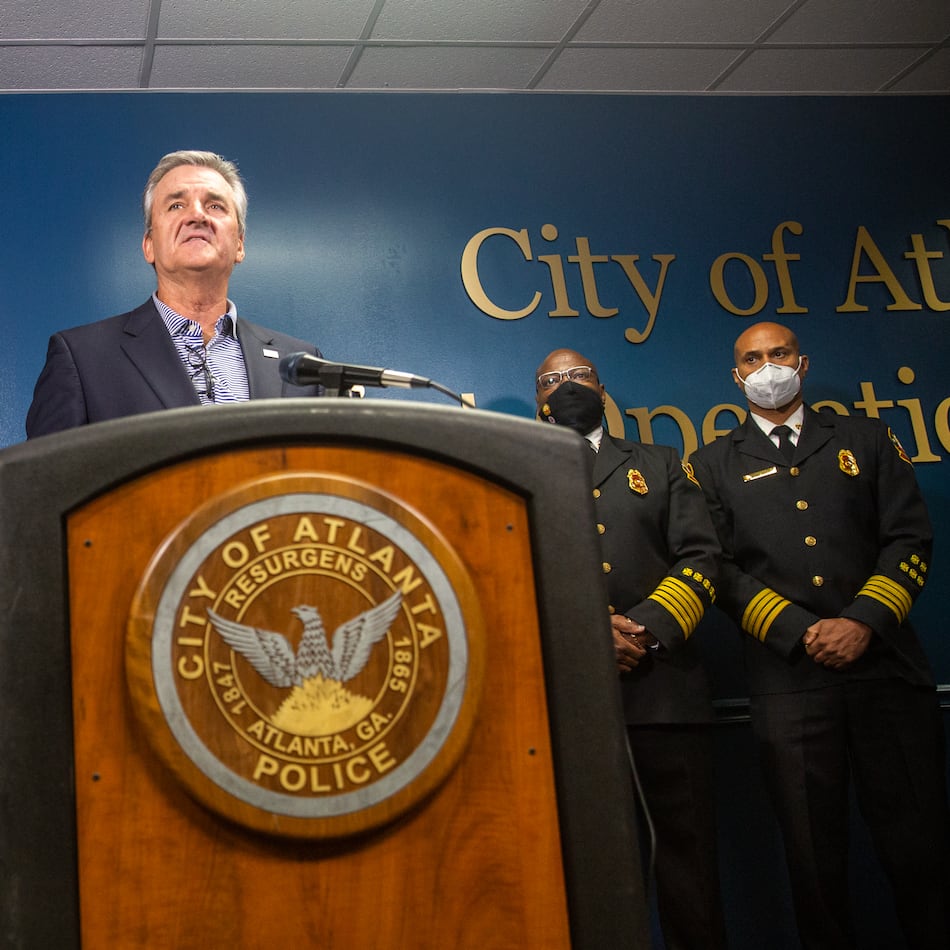The crippling air traffic control outages that Newark Liberty International Airport has been struggling with, on top of the fatal Ronald Reagan Washington National Airport midair collision in February, have put a harsh spotlight on the need to modernize the U.S. air traffic control system.
“The system we have here is not worth saving,” Transportation Secretary Sean Duffy said in early May as he announced a proposed overhaul of the entire system.
And while Hartsfield-Jackson Atlanta International Airport, the world’s busiest airport, has not caught headlines recently for any of its own air traffic control issues, it’s incredibly vulnerable to them, Nick Daniels, president of the National Air Traffic Controllers Association, said in an interview with The Atlanta Journal-Constitution.
“Newark is the example of what can happen,” he said.
“ATL, DFW, LAX, Chicago, pick a major market … if these communication issues are not modernized … it could happen to another airport.”
The air traffic control tower at Hartsfield-Jackson was 69% staffed as of September 2023, according to the most recent Federal Aviation Administration figures.
The national statistic is about 74%.
However, there are three layers of air traffic control around airports. Atlanta’s next layer, the facility managing the airport’s broader airspace, known as TRACON or Terminal Radar Approach Control in Peachtree City, was about 63% staffed. Its ARTCC, or Air Route Traffic Control Center in Hampton, which manages en route traffic, sat at about 90% staffing.
Atlanta is roughly in the “middle of the pack” for staffing, said Mary Schiavo, an aviation attorney with Motley Rice and former U.S. Department of Transportation inspector general.
It helps that it’s more of a sought-after post given the city’s livability and the distinction of being the world’s busiest airport, she said.
Atlanta is also an airport with among the highest pay scales for air traffic controllers.
“Workers don’t avoid Atlanta as they do other locations,” she said. “It could change tomorrow, but Atlanta’s doing pretty well.”
However, all air traffic control facilities have the same aging, copper wire infrastructure as Newark, Daniels said.
And given how busy Atlanta is and how interconnected U.S. airspace is, Atlanta is especially vulnerable to a domino effect from problems popping up elsewhere, he explained.
An issue at another large airport hundreds of miles away — or at a small general aviation airport nearby — can majorly disrupt things in Atlanta.
“Air traffic control is the ultimate team sport,” Daniels said.
The system’s failings have to be “corrected in an extremely timely manner, so that Atlanta doesn’t feel those impacts from outages, whether it’s at Atlanta itself or around the country,” Daniels said.
View from inside the ATL tower
According to a recently retired Atlanta-based air traffic controller who requested anonymity in order to protect future work opportunities, the facilities in Hartsfield-Jackson’s tower and at TRACON in Peachtree City aren’t nearly as outdated as other cities.
The TRACON was built in 2001, and the tower was built in 2006; both are “pretty nice,” he said.
That’s even though the tower’s elevator sometimes breaks down, he recalled.
“That’s a lot of stairs, and doing that in the month of August during the summertime is not very nice.”
However, the controllers’ technology — like air traffic control facilities across the country — “is lacking. Does it work? Yes, it works. But there are new technologies out there.”
In Atlanta, like many airports across the country, controllers are still using paper strips to manually keep track of fights, even though a digital version has been deployed in other countries for years.
The FAA is in the midst of a systemwide upgrade of paper strips; Atlanta is set to receive digital strips next April, according to the FAA.
But the retiree added that Atlanta’s airport layout makes for a tight and effective structure.
“The airport is laid out in a method to where we can move a lot of airplanes and move them very efficiently,” he said.
“So because of the structure, I think Atlanta does operate a lot better than a lot of other facilities that are out there.”
However, the persistent staffing shortages, he said, have a real impact on controllers’ quality of life.
“It’s very stressful, and you need breaks, especially during thunderstorm season; it’s really tough.”
Controllers need resources to “allow them to spend time with their families. It’s just hard to have a great work-life balance in this job.”
“These controllers are really tired, and they need a break. They need help,” the retiree said.
Daniels agreed.
Even though he’s never seen such federal support and political will behind a major air traffic control overhaul, “Controller morale is at an all-time low.”
“They’re working six days a week, 60 hours inside that, only four days off in a month. And people get on an airplane, and they never once think about that.”
About the Author
Keep Reading
The Latest
Featured





